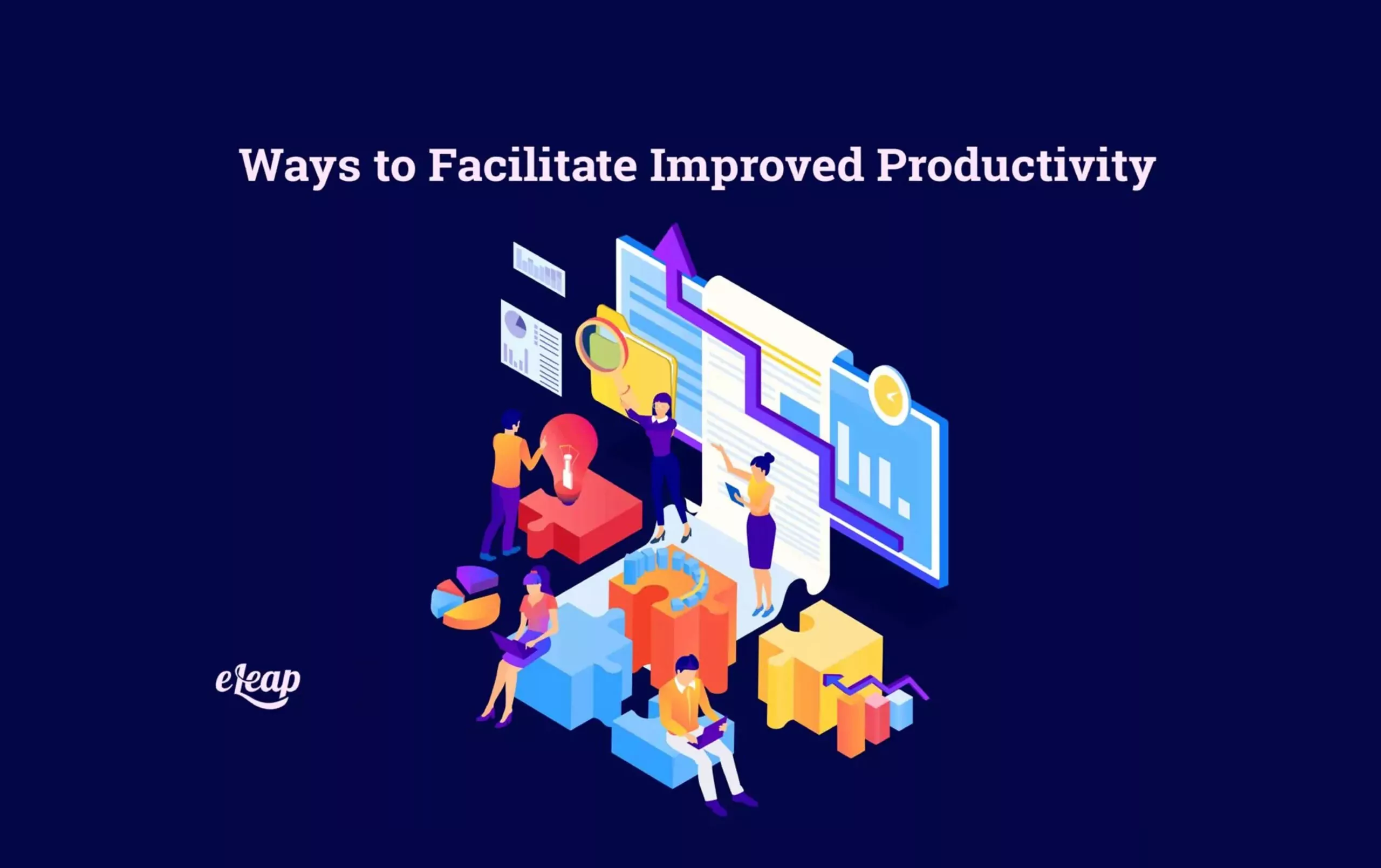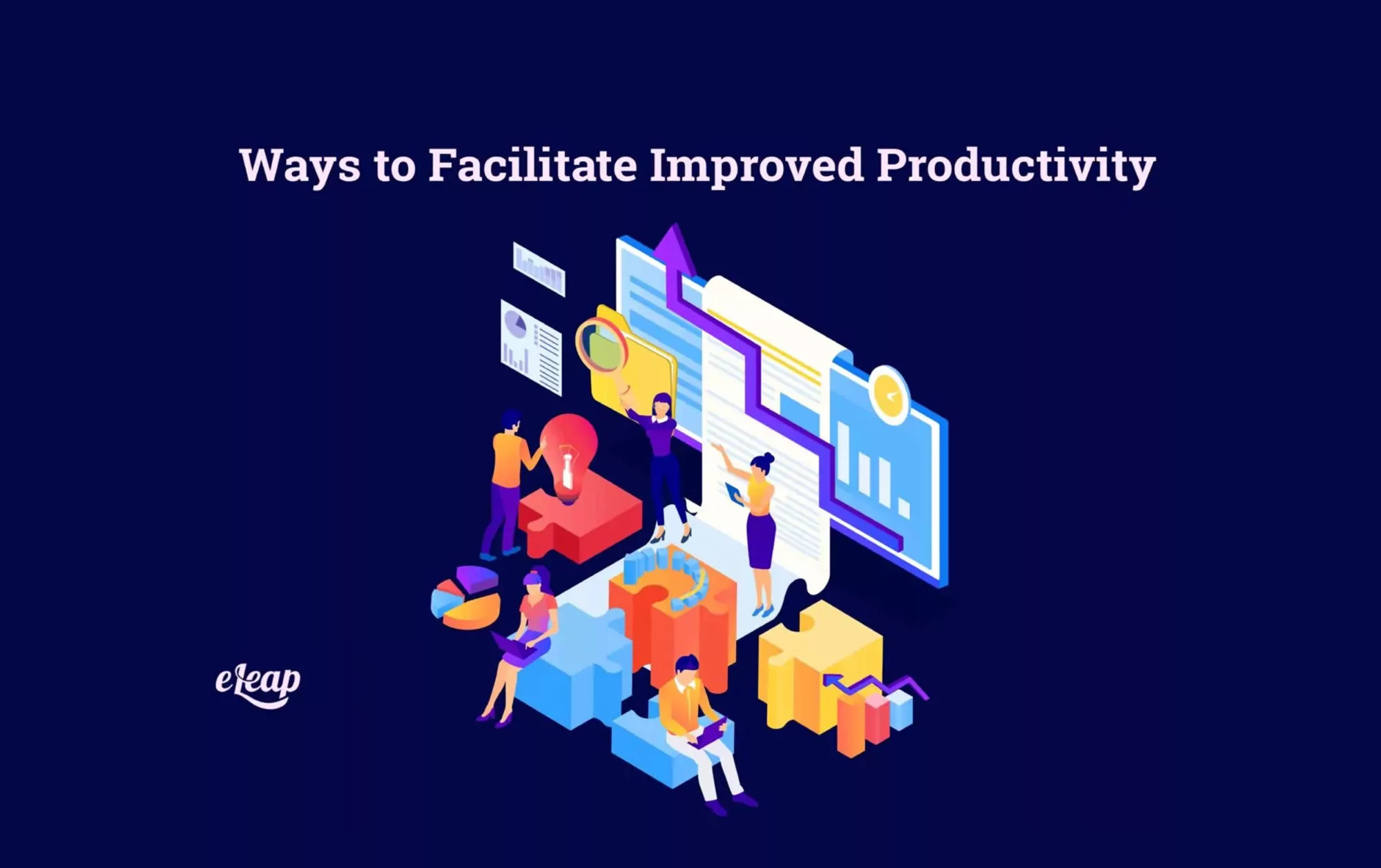Ways to Facilitate Improved Productivity

Are you constantly striving for improved productivity? Do you often find yourself checking email from home or taking calls while you commute to work? Do you have difficulty leaving the office?
The method of attempting to be productive 24/7 doesn’t work. It takes an expensive toll on our work and home life.
The office environment isn’t much better. We often feel overworked, ignored, and overwhelmed. We work long hours with little recognition. Some companies treat their employees like a cog in the wheel or a number within a nameless machine.
Currently, a movement toward changing that mentality is underway. Companies are beginning to move toward a more people-centered model of leadership.
To fully understand the limitations of our employees, we must first understand our limitations as leaders. The same is true of understanding capabilities. We must first understand how to be capable leaders if we wish to groom competent employees.
The new people-centered model of leadership requires an attitude of constant learning. We must recognize and understand the necessary elements to lead a healthy, balanced life.
Several fields of science lend their research to facilitating improved productivity. The research has provided new ideas for accomplishing more in fewer hours. Let’s look at some of those ideas.
Neuroplasticity and Improved Productivity
An effective leader constantly seeks new ideas for improved productivity among employees. Consistently exhibiting an attitude of learning helps a leader improve leadership skills while giving ideas for improving the workplace.
Scientists are routinely discovering new things about mental health and brain chemistry. Those discoveries often lead to new thoughts regarding employee productivity. Learning about the findings and using the information with your team can help you be more effective as a leader. Effective leaders often have happier, more productive employees.
At one time, people believed that mental changeability ended at adulthood. Behaviors and mental capacities were set when we reached adulthood. However, new research indicates that the adult brain can change.
Our brains can change based on environment, diet, meditation practices, and physical activity. We potentially destroy unhealthy neural pathways when we exercise, eat healthy foods, meditate, and live and work in safe atmospheres. The destruction of those pathways essentially rewires our brain.
An employee isn’t a “what you see is what you get” resource. They can grow and change in the right environment, becoming their best selves. Supportive leadership, a challenging workload, little stress, and healthy lifestyle habits are essential to growth and change.
An employee’s innate abilities can evolve. An average employee can become a good employee. A good employee can become a great employee, and a great employee can become an excellent employee. As employees evolve, they exhibit improved productivity.

The Brain and Stress Hormones
Essentially, we, as humans, have three brains. Technically, it’s three sections of the brain triggered by different stimuli. The three sections act as three separate brains at times.
The reptilian brain is comprised of the stem and cerebellum. It’s the most ancient structure of the brain. The reptile brain controls heart rate, breathing, and protective instincts. It’s called the reptilian brain because reptiles and animals with lesser developed brains have these ancient structures.
When someone feels unsafe, this primitive reptilian brain is activated. When the reptilian brain is active, the person can no longer innovate because that portion of the brain can’t work when the reptilian brain is in survival mode.
All mammals have the next brain structure, which is the limbic brain. This section of the brain controls most of our behaviors. Memories, emotions, and aggression reside in the limbic brain. Your limbic brain is at work if you’re worried about your social life.
Last, but definitely not least, humans and other primates have a neo-cortex. We know it better as the frontal lobe. This section handles language, creative, and abstract thinking.
Are you wondering why the parts of the brain are important to a discussion about improved productivity? We already recognize that businesses are looking for ways to be more innovative and creative. Innovation and creativity can put your business above the curve or below it in terms of success.
Innovation is impossible if someone feels unsafe in the workplace. The primitive brain goes into protection mode, and the frontal lobe is inaccessible.
The way the brain works explains why you can’t demand innovation from employees and expect to be a success story. A demand causes fear. Fear triggers the stress hormones cortisol and adrenaline. The creative portion of the mind closes its doors for business.
Blunt demands like, “Create this, or you’re fired!” cause the fear response to release cortisol and adrenaline. An unsafe, stressful environment is bad for business, even if you aren’t that blunt.
The Pulse of Improved Productivity
From morning to night, we are constantly on the go. Reading emails in bed before we leave home. Taking calls during our commute. Then jumping from one project to another at our desks.
When the day ends, we don’t leave the work behind at the office. We answer emails after dinner. Take a business call from the other side of the world because it’s 10:00 am in their time zone.
Have you ever heard of the circadian rhythm? That’s the 24-hour cycle that responds to light and darkness in the environment to tell your body how to behave. Our bodies are not designed to work on a non-stop schedule.
Think about a normal, healthy sleep cycle. Approximately every 90 minutes, we change from deep sleep to REM sleep and back again. Our bodies work similarly to a sleep cycle.
We aren’t supposed to hit the ground running and keep running non-stop for eight to ten hours. During the day, our body has ultradian rhythms it responds to. The cycles in ultradian rhythms cause our level of focus to change throughout the day.
Ideally, we would split our workday into four or five chunks that last 90 minutes at a time. We should incorporate a break between those 90-minute chunks of time. A good way to heed your ultradian rhythm is to select two or three of your most important tasks and focus on those during your 90 minutes.
Setting a timer is a good way to notice the natural 90-minute ultradian rhythm. If you know your body well, pay attention to when you feel tired, restless, or less focused. Those signal that it’s time to take a break for at least fifteen minutes.
Paying attention to your circadian and ultradian rhythms can be helpful for improved productivity. Focusing for limited time frames helps keep the creative juices flowing throughout your workday.
What Are Flow States?
Do you know the feeling when you become engrossed in a good movie, and everything around you seems to disappear? You are hyper-focused and the world around you doesn’t seem to exist. That is considered a flow state.
When we’re working, it’s harder to reach a flow state. Rather than focusing all our energy on one activity, we bounce from one task to another. You may have heard that called multitasking.
Truthfully, multitasking isn’t an efficient way to handle the responsibilities of a job. When we multitask, we may produce quantity, but the quality suffers. If you truly want improved productivity, you will want your team to focus on one task at a time.
To achieve a flow state at work, we must have goals. Those goals must be challenging enough that we can focus on that one task for extended periods. The next step is to remove all distractions from our workspace.
Between emails, text messages, and phone calls, there seems to be an unlimited number of activities pulling our attention from the task at hand.
Once we’ve achieved a distraction-free zone, we must have a clear indication of when we have successfully achieved portions of our goal. When we manage to successfully enter a flow state, we experience improved productivity. The quantity and quality of our work sustain a dramatic increase.
As we see the quality of our work improve, we will also experience a renewed satisfaction in a job well done. Improved satisfaction will lead to more improved productivity because we have a desire to continue performing at this level of satisfaction.
The Bottom Line
An effective leader not only has the abilities and talents required for the job but also possesses the desire to learn how to better the team. The leader should seek knowledge regarding why people perform at their best. When the leaders understand that even adults can grow, change, and improve, they will be able to create better work environments.
How our brains process stimuli dramatically affect our ability to be creative or innovative. For improved productivity, we need to create safe environments and foster innovative thought. Learning to help employees reach their peak potential through increased focus, fewer distractions, and improved time management will help us be more effective leaders.